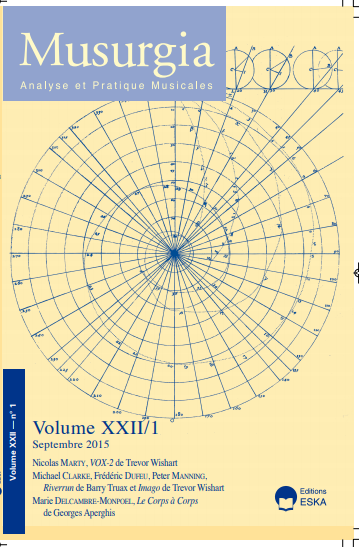Michael CLARKE, Frédéric DUFEU, Peter MANNING, The relationship between technology and creativity in the analysis of electroacoustic music: A comparative study of Riverrun by Barry Truax and Imago by Trevor Wishart
DOI:
https://doi.org/10.54695/mu.22.01.1980Abstract
The TaCEM project (Technology and Creativity in Electroacoustic Music),
conducted by the three authors of this article and funded by United Kingdom’s
AHRC (Arts and Humanities Research Council) for a duration of 30 months (2012- 2015), investigates the relationship between contemporary compositional practices
and new technological resources on the basis of eight case studies from the
electroacoustic repertoire. The authors present a comparative study of two of these
cases: Barry Truax’s Riverrun (1986/2004) and Trevor Wishart’s Imago (2002).
Both composers are deeply involved in the development of digital tools for musical
creation; but their aesthetics, compositional methods and artistic outcomes contrast
strongly. Riverrun was composed using real-time granular synthesis software,
allowing for the generation of large textures and processes, while Imago is the
assemblage of over a thousand of sound files, created with non-real-time software
including many different processes for recorded sound. Both works have a common
point: the use of a very short fragment of sound as the primary source for
composition; but Truax and Wishart’s compositional goals led to two works that
develop these sources according to the very distinct creative and technological paths
detailed through this article.







